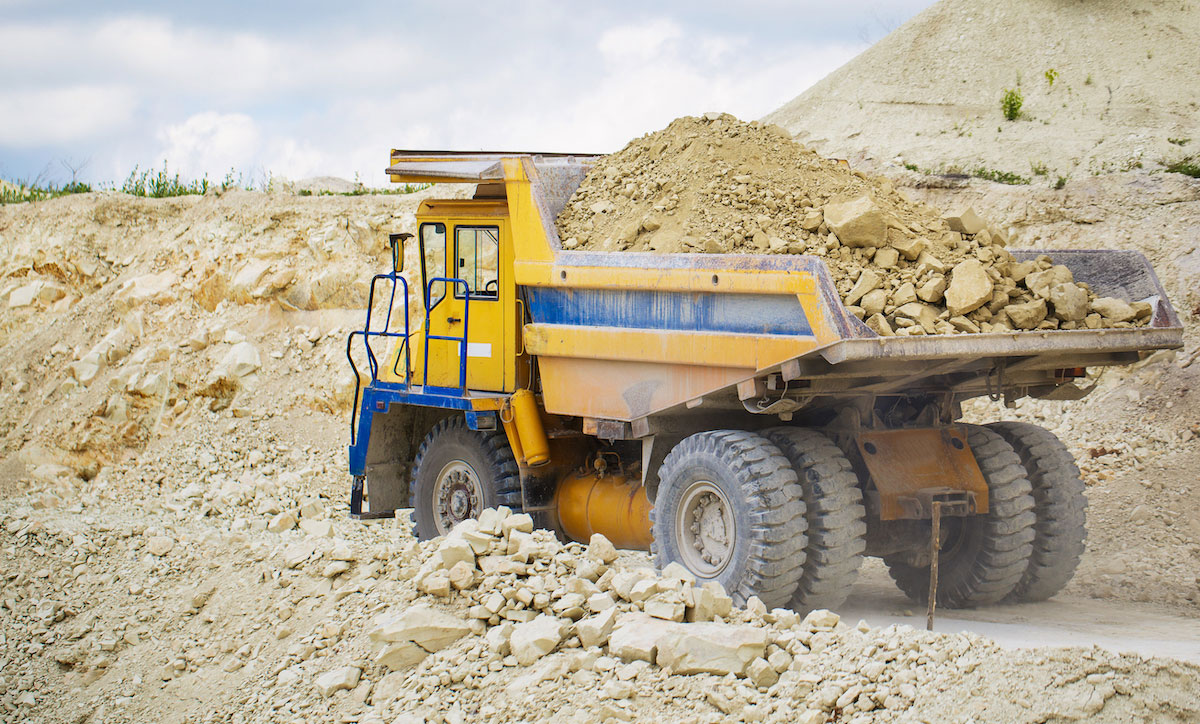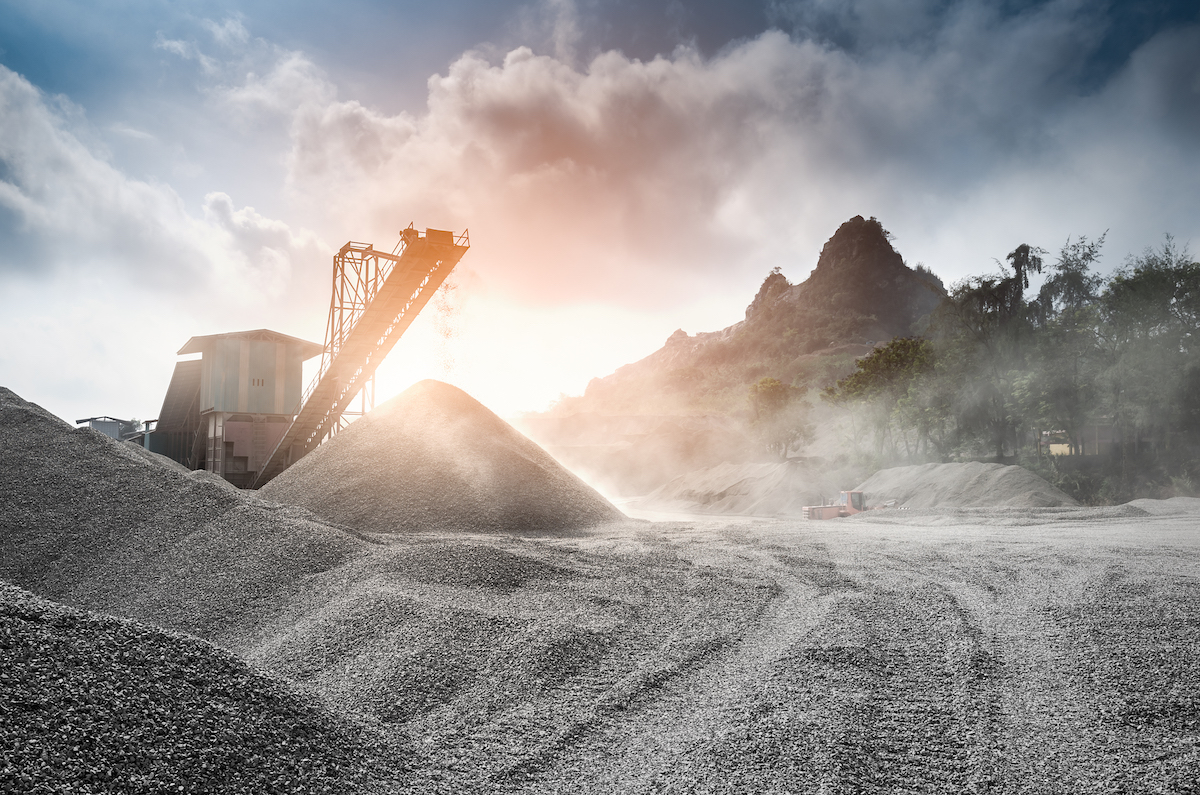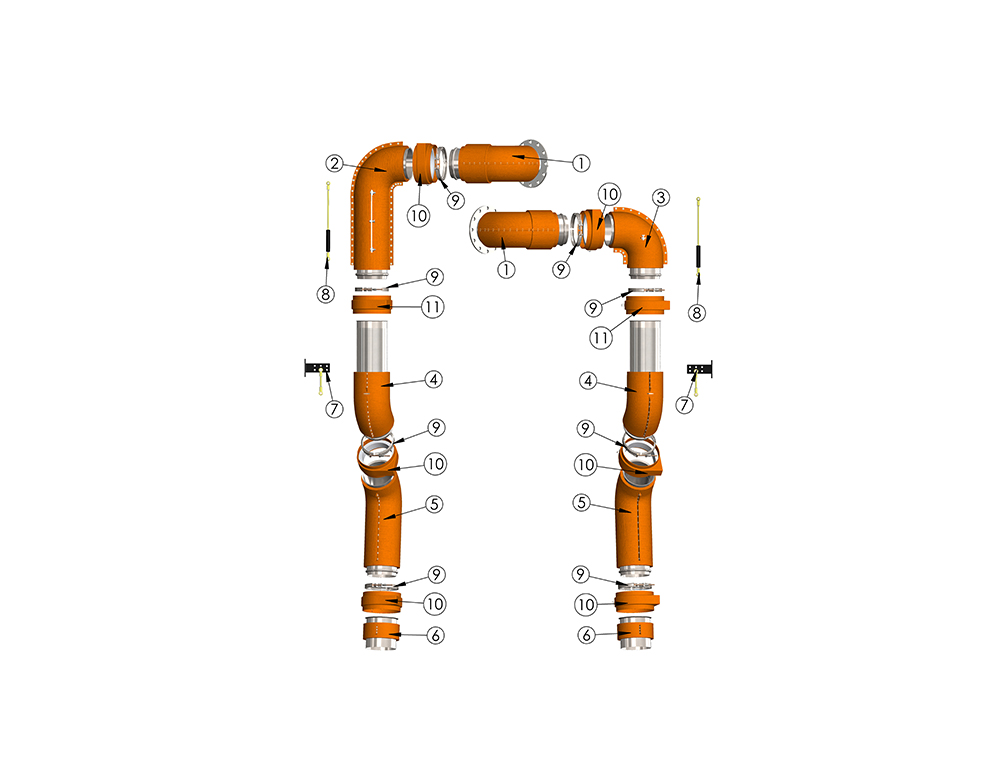Mining Truck Exhaust Systems
Last month we published a post entitled “What Exhaust Parts Are Found In An Exhaust System?” In that piece, we went through the various exhaust parts that are found in mining truck exhaust systems, and provided our readers with information on each component. One thing we didn’t mention in that article is that many of the parts we described are not found exclusively in mining truck exhaust systems. Most of them are also found in logging truck exhaust systems and fishing boat exhaust systems {both of which DBA manufactures}.
And of course parts such as mufflers and tailpipes are present in the car or truck you drive every day. Another myth we didn’t specifically dispel is that, because exhaust systems on different vehicles are mostly composed of the same components, they share the same basic design. Nothing could be further from the truth! There are significant dissimilarities, for instance, between the layout of a logging truck exhaust kit and the setup of the truck exhaust on your Ford F-350. In this latest addition to the blog section of our website, we’re going to take a closer look at the different designs featured in the mining truck exhaust kits we offer.
The Four Different Types Of Mining Truck Exhaust Systems
Before we get into the four styles mentioned above, we should perhaps talk about horse collars. You’ll notice that the names of some of our mining truck exhaust kits mention horse collars. An example would be our mining truck exhaust for the Komatsu 630, the Detroit Diesel 12V 4000 Engine To Horse Collar Insulated Exhaust System.
In the equestrian world, a horse collar is part of the harness used to distribute the load around an animal’s neck and shoulders when pulling a wagon or plough. In the mining industry, a horse collar is a large metal component that arches over the top of the engine that a truck is running. The horse collar is connected to the vehicle’s frame, and some people have described it as the heart of the truck. All of the mining truck exhaust systems that we manufacture here at DBA Silencing are installed behind the horse collar.
Having provided that prefatory explanation, let’s move on to the four types of mining truck exhaust kits that we put together for our clients.
- Upper Heated Box
- Lower Heated Box
- InFrame
- Fender Mount
Each of these categories has its own unique characteristics. Let’s begin our discussion of these attributes by talking about heated boxes.
Heated Boxes
Most mine sites utilize haul trucks to move materials from Point A to Point B. The materials are loaded into the rectangular receptacle on the back of the haul truck, or dump truck, and then transported to their desired location, where they’re released or unloaded. In rare instances, vehicles utilize a rear-eject system, which involves a ram-face pushing horizontally through the box in order to eject the hauled materials, or payload.
There are also trucks that discharge their payload by opening gates on the bottom of the box. Most of the trucks on mine sites, however, are end dumpers, meaning that they empty by raising the front end of their box and letting their payload slide along the bottom of the box and out the rear of the vehicle. Some of these mining trucks can handle a payload of well over 300 tonnes!
Now, in many situations, dumping a payload is a relatively straightforward process. The material being moved {rock or gravel or earth} spills smoothly out of the box. There are environments, though, where this procedure gets trickier. In the Albertan oil sands, for instance, mining truck are often carrying tarry material that can freeze in winter and stick to the steel of the box. When this happens, dumping can be difficult and even dangerous.
If a mining truck’s payload fails to exit the box, it can under certain circumstances lead to the truck tipping over. Sites are typically configured so that a mishap of this nature isn’t catastrophic, but on those occasions that trucks are dumping off a berm it can be a long way down for an unbalanced piece of equipment.
One way to combat these sorts of problems is to heat the box of your mining truck. And one way to do that is to design your mining truck exhaust system in such a way that high-heat exhaust gases flow around your box and raise the temperature of its surfaces. Both upper heated boxes and lower heated boxes employ this same exhaust-channeling strategy; the only real difference between the two is the entry point of the heat.
Of course, heating your box doesn’t necessarily mean that your payload will slide out in a friction-free manner. Material often sticks in the upper corners of a raised box, and this can be a real safety hazard as it may come loose later at an inopportune moment. Many mine sites deal with recalcitrant payload remnants by putting their trucks in enormous wash bays where the vehicles are sprayed for 24 straight hours. This thorough treatment is necessary because material found in places such as the Canadian oil sands can often harden to a concrete-like consistency.
That’s why many of these bays are equipped with high-pressure water cannons on slides that follow carefully programmed patterns to remove stubborn material. Those of us here at DBA Silencing have actually asked site operators to adjust their wash patterns slightly so as to avoid getting too close to the fibreglass shells that encase some of our mining truck exhaust components. Our shells are durable but they’re built to resist heat not H2O, and we’re talking about two-inch nozzles shooting liquid at 4000 PSI!
An example of a mining truck exhaust kit for an upper heated box would be our Komatsu 930E Cummings QSK 60 Stage Two Engine To Upper Heated Box Insulated Exhaust System.
And an example of a kit for a lower heated box would be our Komatsu 930E Cummins QSK 60 Stage Two Engine To Lower Heated Box Insulated Exhaust System.
InFrames & Fender Mounts
The other two types of mining truck exhaust systems are, as the title of this section suggests, inframes and fender mounts.
With an inframe system, there are exhaust pipes running the entire length of the truck’s frame. {The average mining truck frame, for reference, is 40 to 50 feet long.} With this configuration, exhaust gases vent at the end of the vehicle’s box.
An example of a mining truck exhaust kit for an inframe design would be our Komatsu 830E Inframe Behind Horse Collar Insulated Exhaust System.
With a fender mount design, on the other hand, exhaust gases are venting closer to the horse collar and the engine. In this system, you typically have 10 feet of exhaust pipe on one side and 20 feet of exhaust pipe on the other. Since you generally have fewer feet of exhaust pipe in a fender mount configuration than you do with an inframe setup, fender mount systems are less expensive and more common.
An example of a mining truck exhaust kit for a fender mount design would be our Komatsu 830E Fender Mount Behind Horse Collar Insulated Exhaust System.
In closing: we hope that, after perusing this piece, you have a better understanding of the different types of mining truck exhaust systems that are out there and the mining truck exhaust kits offered by DBA Silencing. If you have questions about mining truck exhaust systems {or logging truck exhaust systems, or fishing boat exhaust systems, or any type of exhaust system really}, DBA has exhaust professionals on staff who would be delighted to assist you.
If you’d like to give us a ring at our HQ, we can be reached at 1-800-661-5886. If you’re shy and you don’t like to talk on the phone {and we totally get that, because these days don’t most people just text?}, feel free to email us at [email protected]. You can also, of course, find all sorts of particulars on DBA products by checking out our website and our catalogue. Ciao for now!





